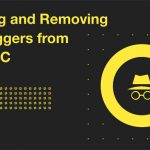The digital age has brought new challenges to criminal investigations, making specialized tools essential for uncovering electronic evidence. Modern digital forensics tools have become increasingly sophisticated, offering investigators powerful capabilities for data recovery, analysis, and documentation. These tools form the backbone of contemporary cyber investigations, enabling professionals to tackle complex digital crimes effectively.
The Foundation of Electronic Evidence Collection
Professional investigators rely heavily on forensic software to maintain evidence integrity. These specialized applications ensure proper documentation and chain of custody while providing powerful analysis capabilities that can make or break a case.
Core Components of Digital Investigation Software
Modern forensic tools are designed to facilitate comprehensive digital investigations. Key components include:
- Data Acquisition and File System Analysis
Tools provide robust mechanisms for collecting data from various sources, including hard drives, external storage, and volatile memory. File system analysis helps investigators uncover hidden or deleted files, offering insights into user activities. - Memory and Network Forensics
Investigators can examine memory dumps for traces of malware or unauthorized access. Network traffic analysis identifies anomalies, such as unauthorized data transfers or unusual communication patterns. - Mobile Device Examination Tools
With the ubiquity of smartphones, mobile forensics has become critical. Tools enable the extraction of data from locked devices, recovery of deleted files, and analysis of app usage, social media interactions, and GPS history.
Advanced Analysis Techniques
The rise of sophisticated cyber threats has driven the development of cutting-edge analysis features, including:
- Machine Learning and Automated Analysis
Machine learning aids in identifying patterns and anomalies, while automation accelerates processes like timeline reconstruction, evidence correlation, and report generation. - Encrypted Data Recovery and Malware Analysis
Advanced decryption tools allow investigators to access protected data, while malware behavior analysis identifies potential threats by observing code execution in controlled environments. - Cloud Data Acquisition
As cloud storage becomes more prevalent, forensic tools now offer capabilities for remote data acquisition, virtual environment examination, and the separation of multi-tenant data.
Professional Development and Certification
The field of digital forensics training continues to evolve rapidly and staying current in digital forensics requires ongoing education. Professionals must pursue tool-specific certifications, stay updated on legal compliance requirements, and adapt to emerging technologies. Industry best practices and frameworks are essential for maintaining investigative integrity.
Mobile Device Investigation Capabilities
Mobile forensics has become increasingly crucial in modern investigations. Key features include:
- Data extraction from locked devices
- Social media analysis
- GPS location history
- Deleted data recovery
- App usage analysis
Cloud Forensics Integration
Modern tools now address cloud-based evidence collection:
- Remote data acquisition
- Cloud storage analysis
- Virtual environment examination
- Multi-tenant data separation
Automated Analysis Features
Automation has transformed digital forensics by enabling:
- Rapid data processing
- Pattern identification
- Report generation
- Evidence correlation
- Anomaly detection
Legal Compliance and Documentation
Tools must meet strict legal requirements for:
- Evidence preservation
- Chain of custody
- Authentication methods
- Audit trails
Emerging Technologies and Future Developments
Digital forensics continues to evolve with innovations that address emerging threats and technologies:
- Cryptocurrency and IoT Investigations
Specialized tools are being developed to track cryptocurrency transactions and analyze data from IoT devices, which often hold valuable forensic evidence. - AI and Predictive Analysis
Artificial intelligence aids in real-time monitoring and predictive analysis, helping investigators anticipate cybercriminal tactics. - Real-Time Monitoring
Enhanced monitoring tools enable investigators to observe live activities in compromised systems, providing immediate insights.
Conclusion
As digital landscapes expand, so do the challenges faced by forensic investigators. Modern tools integrate advanced analysis techniques, artificial intelligence, and automation to stay ahead of sophisticated cyber threats. By continually evolving and adhering to rigorous legal and technical standards, digital investigation software ensures investigators have the resources needed to protect critical systems and uncover the truth.
Sources:
- Digital Forensic Research Workshop (DFRWS) Standards
- Scientific Working Group on Digital Evidence (SWGDE) Guidelines
- National Institute of Standards and Technology (NIST) Publications
- International Journal of Digital Forensics & Incident Response
Note: These sources represent authoritative publications in digital forensics as of April 2024. For the most current information, please consult updated publications from these organizations.




Leave a comment
Have something to say about this article? Add your comment and start the discussion.